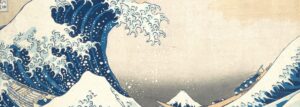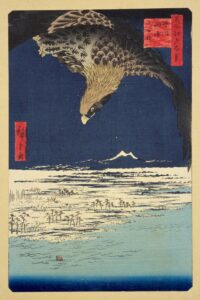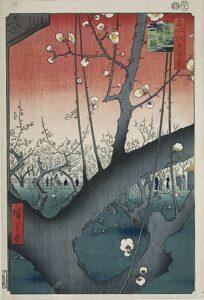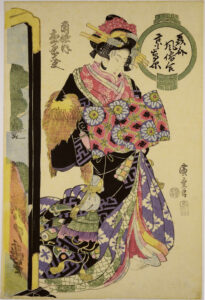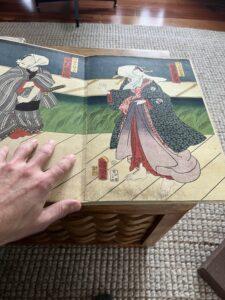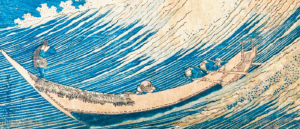100 Aspects of the Moon – Tsuki no Hyakushi by Tsuki no Hyakushi
My bounty is as boundless as the seas
My love as deep, the more I give to thee,
The more I give, for both are infinite. -Romeo & Juliet
Ah, how romance has its way to make us all feel butterflies in our stomachs! The kiss each other good night, that hug on a gloomy day, and moonlight shining over two lovebirds as they cuddle in bed.
And Oh I want to bloom
In your arms
The way love blooms
In the night’s arms
We all have our guilty pleasures, don’t we? And that’s what a lot of art is based on too, no matter the kind or the nation it comes from. But how would you define romance in terms of art really? Well, to put it in layman’s terms, it would go something like this:
(n.) A prose narrative treating imaginary characters involved in events remote in time or place, usually heroic, adventurous, or even heroic[1].
Huh, so romance doesn’t have to be all about a loving couple after all? Yes, my friends. It could be anything from mythical tales, to nostalgic historical characters that warm your heart, folklore, or even some contemporary scenes that resonate with you. Anything really. Because when you’re an artist, it’s up to you to romanticize anything you want isn’t it now? And when I say romanticize, there’s one artist in particular that comes to mind: Tsukioka Yoshitoshi – the last woodblock artist of the 19th century, but the greatest of all time who left this world with a bang indeed. Why so? Where most woodblock artists of Japan were happy to follow the ways of the previous centuries, Yoshitoshi was a thinker outside the box. And never was he afraid to try something new. Yes, I’m talking about his series One Hundred Aspects of the Moon Tsuki no Hyakushi[3]. Who would’ve thought that you could have a hundred different ukiyo-e prints, each of them telling a story of their own, and having a soothing motif of the moon looking over them – almost as if God was looking down on his creation from the skies?
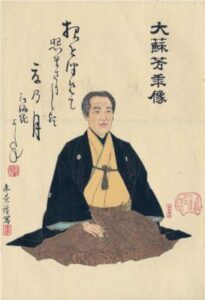
Tsuki no Hyakushi (One Hundred Aspects of the Moon) is a collection of 100 distinct nishiki-e i.e. colored woodblock prints, that were released in the later parts of Yoshitoshi’s artistry career, just before he passed away[3]. The series has a unique feel to it, with not just the aspects of the moon that its depicting, but the stories they tell. They range from Chinese and Japanese anecdotes, historical events, feminism, birds, and animals all the way to fiction like ghosts and shadows, with no theme boundaries whatsoever but yet a common connection – the moon[3]. So to say that Yoshitoshi wasn’t just an unconventional artist but a remarkably creative individual ahead of his time would not be an overstatement.
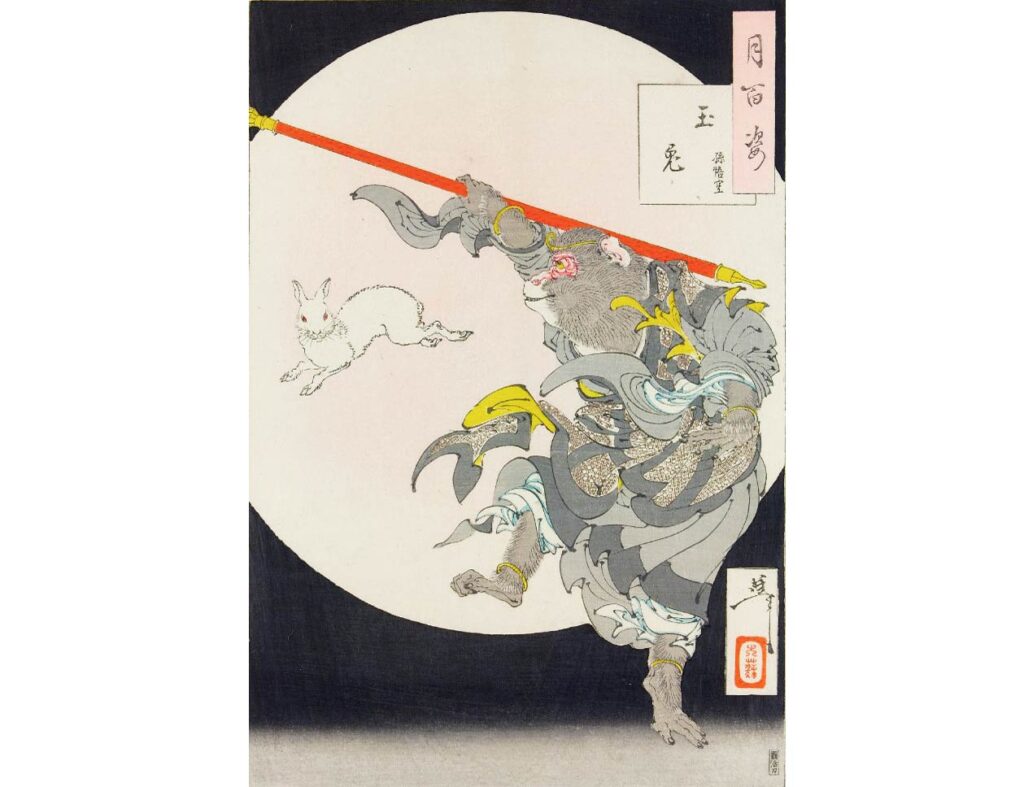
Speaking of some of his masterpieces first comes Jade Rabbit[2] featuring Monkey King, Son Goku, the star of the Chinese classic Journey to the West. With the moon larger than in any other of the images of the series, Yoshihiro seems to have attempted a more heroic representation in this imagery. An intricate blend of colors in Son Goku’s image, and the white rabbit so distinctly visible despite the moon in its background, this almost doesn’t seem like a woodblock piece, but rather a carefully crafted sketch!
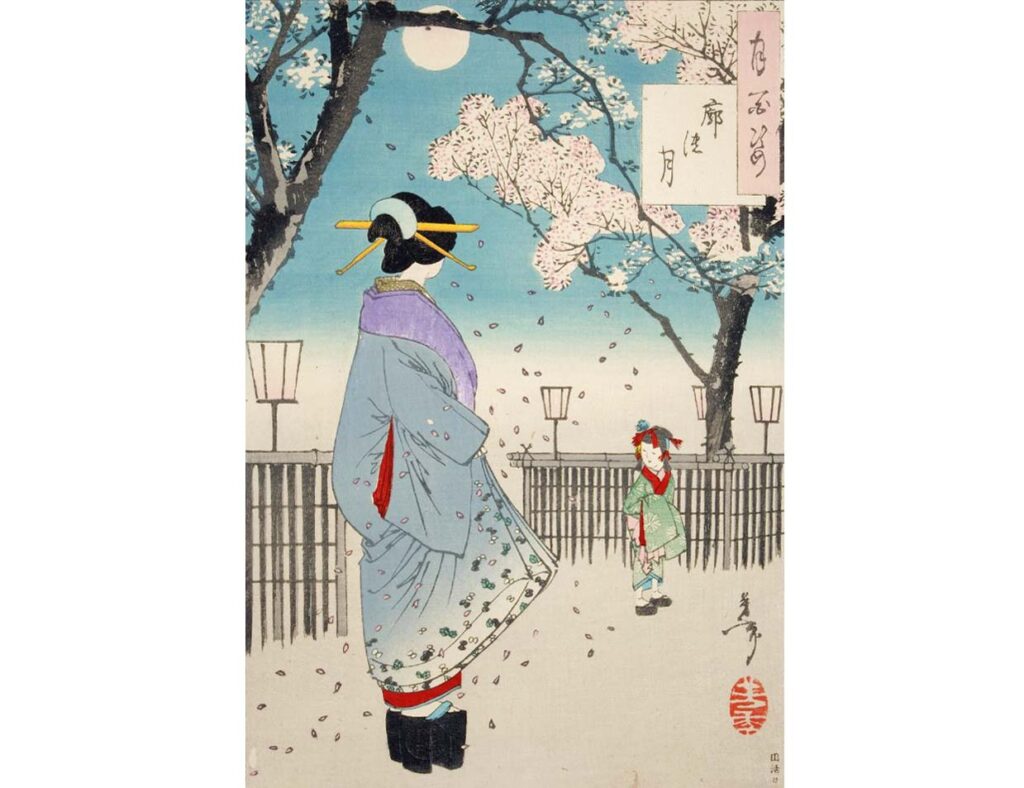
Up next would be The Moon of the Pleasure Quarter[2] – a scene from one of the entertainment districts of Japan at the time. A Geisha dressed as magnificently as ever alongside her attendant, overshadowed by moonlight as the sakura (cherry blossom) petals fall shower onto them like droplets on a rainy day. To say the least, this piece is an epic representation of what Japanese culture entailed for Geishas i.e. courtesans for the wealthy upperclassmen. With the light of the night, and beauty in the dark, Yoshitoshi thought of Geishas as no less than what could be called the “cherry blossoms of the night”.
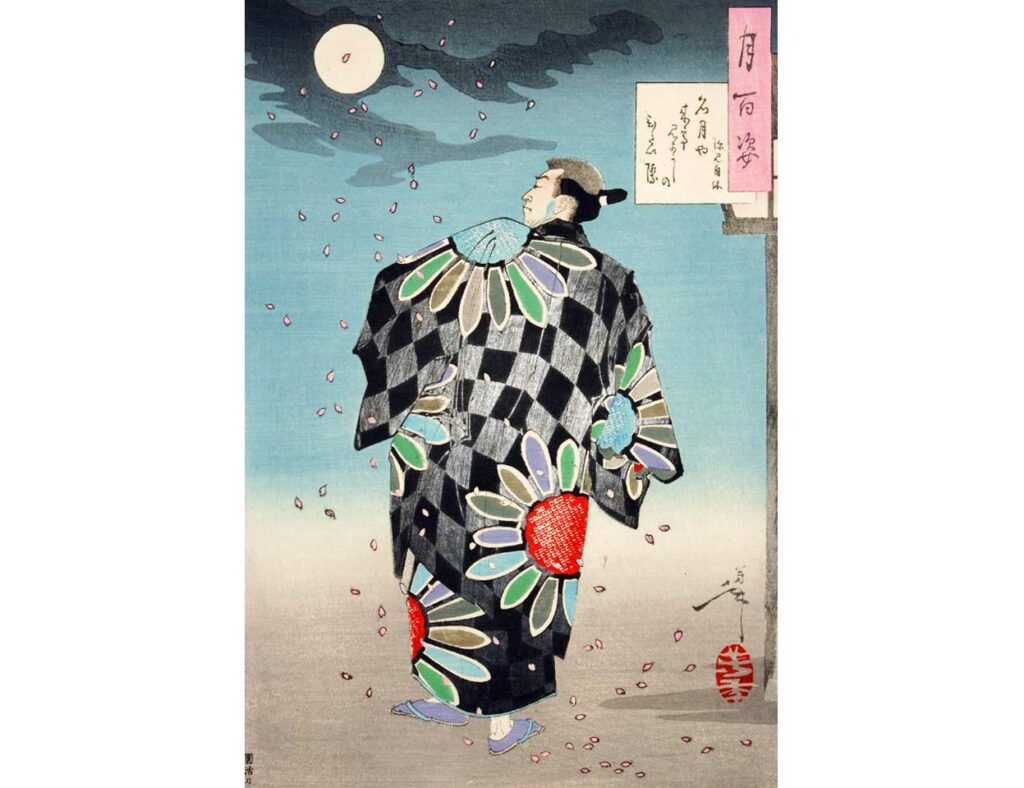
Oh, and how could we miss out on the only A Poem by Fukami Jikyu[2] – a masterpiece where the artist depicted the entire theme of a poem with mere woodblock art? But not so fast, you might actually misunderstand the imagery at first glance.
mei getsu ya, kite miyo kasha no hitai giwa.
What this stanza itself reads is:
full moon, come to admire me on the stage!
So it might actually be the opposite of what you thought! It’s not Fukami Jikyu looking up to the moon, but him in his full glamor, with a rich, colorful, peacock-toned kimono, showing himself to the moon – a typical representation of a stereotypical Samurai i.e. upperclassman in Tokyo at the time.
Mesmerized? Shocked? Or just plain confused? 97 other paintings are waiting for you waiting for you to look at them however you like with this newfound knowledge of Yoshitoshi’s art style. We hope he’s resting in peace knowing his last work is as well-liked as it is these days!
[1] “Tsukioka Yoshitoshi – 69 Artworks – Printmaking.” Www.wikiart.org, https://www.wikiart.org/en/tsukioka-yoshitoshi.
[2] Sandrey, Diccon. “The Stories behind Yoshitoshi’s Influential 100 Aspects of the Moon.” Japan Objects, Japan Objects, 3 July 2020, https://japanobjects.com/features/yoshitoshi-moon
[3] “One Hundred Aspects of the Moon.” The Library of Congress, https://www.loc.gov/item/2021668853#:~:text=Summary,Buemon%20between%201885%20and%201892

